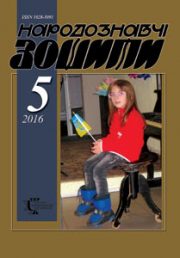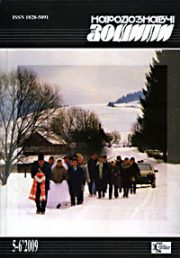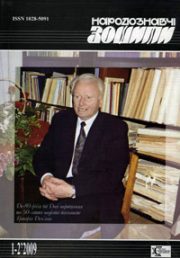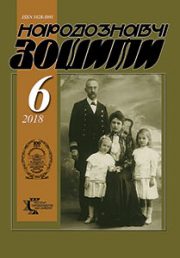The Ethnology Notebooks. 2018, 1 (139), 206–214
UDK 391:688.721.2](477=161.2)(091)
DOI https://doi.org/10.15407/nz2018.01.206
Received 21.12.2017
UKRAINIAN DOLL IN FOLK CLOTHES: HISTORICAL EXPERIENCE AND MODERN PRACTICE
ORCID ID: https://orcid.org/0000-0002-5931-3816
Herus Liudmyla, Candidate of Sciences in Art Studies,
Senior Researcher
In the Folk Art Department
of the Institute of Ethnology
of the National Academy of Sciences of Ukraine.
Svobody Avenue 15, 79000, Lviv, Ukraine.
Contacts: e-mail: ludmilagerus@gmail.com
Abstract. Peculiarities of functioning of doll in traditional clothes in Ukraine in different historical periods are determined, the factors of the formation of the doll as a kind of art, the influence of historical experience on contemporary artistic practice are determined.
Keywords: doll, artistic object, clothing, representation, art.
REFERENCES
G. [Grushevs’kij Marko] (1904). Dytjachi zabavky ta gry usjaki. Kievskaja starina. Kiev. T. 86. Ijun’-avgust. P. 51–105.
Anan’ev, E. (Ed.). (2003). Kukly mira. Moskva: Avanta.
Kustarna promyslovist’ ta kustarno-promyslova kooperatsiia na pershij Vserosijs’kij sil’s’kohospodars’kij ta kustarno-promyslovij vystavtsi: Spysok nahorod. Ukrainkustarspilka. 1924. № 1–2. S. 54–55.
Najden, O.S. (2007). Ukrains’ka narodna lial’ka. Kyiv: Stylos.
Narodne mistectvo Galichini j Bukovini. Narodnoe iskusstvo Galicii i Buko-viny i Zemskij Sojuz v 1916–1917 g.g. vojny. Kiev: Tip. Hudozh.-remesel. shk.-masterskoj pech. dela, 1919.
Orshanskij, L. (1912). Istoricheskij ocherk razvitija igrushek i igrushechnogo proizvodstva na Zapade i v Rossii. Igrushka. Ee istorija i znachenie. Moskva. P. 3–64.
Pribyl’skaja, E. (2014). Zhizneopisanie. Studii mystetstvoznavchi. № 4. P. 104–113.
Pribyl’skaja, E. (2015). Zhizneopisanie Studii mystetstvoznavchi. № 2. P. 111–124.
Chubins’kij, P.P. (1877). Trudy jetnografichesko-statisticheskij jekspedicii v Zapadno-Russkij kraj, snarjazhennoj Imperatorskim Russkim Geograficheskim Obshhe-stvom. Jugo-Zapadnyj otdel. Sankt-Peterburg. Т. ІV.
Bardalym, N. Zhenshhina s dushoj rebenka. URL: https://notabene.info/ru/lyudi/102-zhenshchina-s-dushoj-rebenka.html.
Kachur, K. Yurij Mel’nychuk: Typazhi lial’ok-ukrainok tvoryla iasnovydytsia. URL: https://rukotvory.com.ua/rozmovy/yuriy-melnychuk-typazhi-lyalok-ukrayinok/.
Spepanova, I. «Modnye» kukly – pervye manekenshhicy. URL : http://www.antiquedolls.ru/publications_ainfo1007.html.
Shestakov, S. Vzaiemovplyv profesijnoho ta narodnoho mystetstva na prykladi tvorchosti Hanny Sobachko, Vasylia Dovhoshyi ta Yevmena Pshechenka. URL: http://uartlib.org/vzayemovpliv-profesiynogo-ta-narodnogo-mistetstva-na-prikladi-tvorchosti-ganni-sobachko-vasilya-dovgoshiyi-ta-yevmena-pshechenka/.







